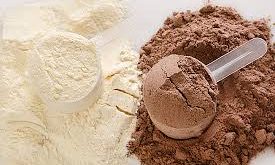This article sheds light on the signs, diagnosis, and treatment of anal fistula
Anal fistula also referred to as fistula-in-ano, is a small tunnel that is formed between the end of the anus and skin near the anus. This generally occurs when there is an infection near the anus which leads to the formation of an abscess (collection of pus). Individuals suffering through certain diseases such as Colitis, Crohn’s disease, and undergoing radiation treatment for rectal cancer are at higher risk of developing anal fistula. If not diagnosed at the right time, one can encounter a recurrence of an abscess, and an anal fistula is possible. Seek immediate treatment after spotting the symptoms.
These are the signs and symptoms of anal fistula that you shouldn’t ignore
· Constant pain: Individuals suffering from anal fistulas might feel severe, nerve-wrenching pain around the anus which can cause discomfort. It becomes a challenging task for individuals suffering from anal fistulas even when they sit down, move around, cough, or have bowel moment. This pain is caused due to infection and swelling formed in the tissues around the anus.
· Inflammation and redness: Individuals may experience redness, swellings, or inflammation in the area around the anus. This swelling can cause irritation making your skin tender and sensitive to touch. Some individuals might also notice a lump or tight skin near the anus. Swelling and inflammation is the body’s way of responding to certain infections. It is suggested to avoid frequently touching the infected area, as constant touch can make you tend skin bleed and have a burning sensation.
· Foul smell: Individuals might often notice a strong, foul smell while discharging from the fistula. This foul smell can be highly noticeable when the discharge is heavy or soaked onto the clothes, making individuals change their clothing throughout the day to avoid such an unpleasant smell. This foul smell is caused due to bacteria present in pus.
· Fever: In certain situations, individuals might feel uneasy, and feverish, and experience chills, and episodes of vomiting causing discomfort.
Diagnosis:
Diagnosis of anal fistula is done with a detailed assessment by your doctor. It is achieved by gaining information such as knowing individuals’ medical history, signs or symptoms experienced, and if previously experienced abscesses near the anus. This information helps your doctor know more about your current situation to go with the best available treatment option. Your doctors might physically examine the infected area around your anus to identify any abnormalities or lump. In some cases individuals undergo MRI (magnetic resonance imagining), ultrasound, or CT scan (computed tomography) to assess the fistula more clearly.
How Anal Fistula is treated?
In most cases, individuals need to undergo surgery for treating anal fistula. This surgery can be simple or complex depending on the severity of anal fistula. Most individuals undergo simple surgery which can be performed in one go, whereas individuals with complex anal fistula undergo surgery in different stages.
· Fistulotomy: Fistulotomy is the most common surgical procedure used for treating simple anal fistulas, It involves making an incision to open the entire fistula to allow drainage and let it heal from inside.
· Seton placement: It is a piece of thread that is placed in the fistula to keep it open and allow the smooth flow of drainage. This surgical method is used for treating complex anal fistulas.
Individuals are advised to do certain lifestyle modifications such as including fresh fruits and vegetables in their diet and avoiding eating spicy food which can easily irritate your fistula.
BY: Dr Anil Malik, General Surgeon, Apollo Spectra Delhi, Chirag Enclave
 Newspatrolling.com News cum Content Syndication Portal Online
Newspatrolling.com News cum Content Syndication Portal Online






